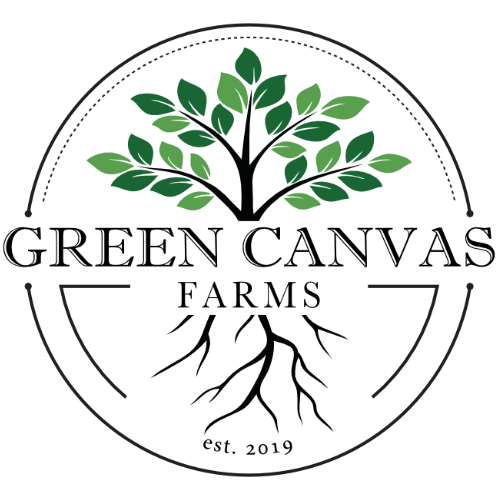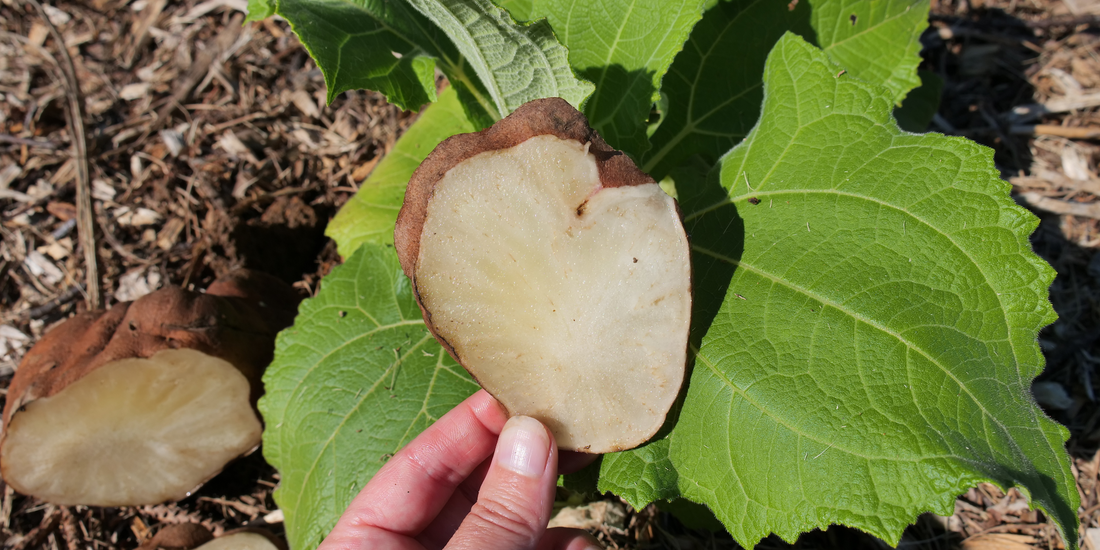Fun topics below: juicy crunchy sweet tubers, Andean plants, Mennonite surprises
Yacon (Smallanthus sonchifolius) is an Andean root crop with juicy, sweet, edible tubers. It’s also called Bolivian sunroot - which is a beautiful name, isn’t it? Yacon leaves are soft and fuzzy; the shape reminds me of dahlia leaves, which is no surprise since they are related. Also related to sunflowers, yacon flowers are asterid and sunny. But the main attraction is what’s underground. The large lateral tubers form kind of like sweet potatoes and have a sweet taste. In fact, yacon tubers are rich in inulin (46% inulin, dry weight). Inulin is a polymer of fructose and has little impact on blood sugar spiking. Yacon can even be juiced and then concentrated into syrup or formed into blocks of sugar called ‘chancaca’. The tubers also contain quite a bit of protein compared to other tropical root crops. The leaves contain the most protein (11-17%, dry weight), but those are best cooked.

I learned of yacon from our Mennonite community in town. The Mennonite connection to Latin America might come as a surprise to some, but there are large populations of Mennonites living in countries such as Mexico, Bolivia, and Peru. I can only speak for our local communities, but the movement between Latin America and the U.S. is common. And so, the Latin American influence is alive and well in the market near us. Produce, plants, & recipes hailing from Latin America are curiously mixed in with the more traditional americana elements you’d expect to find in a Mennonite market.
My Mennonite market always has a plant sale in spring, and so last year I bought a yacon plant without having ever tried it. I grew it all summer, eagerly awaiting my first taste of the tubers in the fall. When November rolled around and the foliage had died back, I dug up the plant, gave the tubers a good scrub, and let them cure for several days. I peeled the skin of one and cut off a chunk to try. It was pleasantly sweet, and reminded me of sugar cane. The texture was super crunchy in that juicy way like an apple or water chestnut - which is one of my favorite textures!


Flash forward to this year - I’ve bought another yacon plant from the market (I failed at overwintering my first plant). This is the first year they’ve sold yacon as produce, so I’ve snagged a few tubers as well. They keep for a long time in the refrigerator.
 Peeled yacon is tasty enough to eat on its own and can be consumed raw or cooked. I played around with it in the kitchen* and paired it with kohlrabi, which has also been available at the market. They had 3 beautiful colors of kohlrabi - white, purple, and green. Kohlrabi originates from northern Europe, so this creation wasn’t strictly South American. But even though my jar of Asian chili crunch was calling my name, I decided to lean into the South American side with a vinaigrette flavored with cilantro, homegrown dried huacatay (Peruvian black mint), garlic, and lemon juice (lime would’ve been more appropriate, but I was all out. Too many gin & tonics in this household).
Peeled yacon is tasty enough to eat on its own and can be consumed raw or cooked. I played around with it in the kitchen* and paired it with kohlrabi, which has also been available at the market. They had 3 beautiful colors of kohlrabi - white, purple, and green. Kohlrabi originates from northern Europe, so this creation wasn’t strictly South American. But even though my jar of Asian chili crunch was calling my name, I decided to lean into the South American side with a vinaigrette flavored with cilantro, homegrown dried huacatay (Peruvian black mint), garlic, and lemon juice (lime would’ve been more appropriate, but I was all out. Too many gin & tonics in this household).
It’s super simple, but it’ll satisfy a crunch lover. The finely shaved kohlrabi has that cabbage crunch and the cubed yacon has that apple crunch. Maybe one day I can go to the Andes and try some traditional yacon dishes…
*I don’t have a formal tested recipe to share, but here’s a tip when working with yacon: Yacon oxidizes quickly when the flesh is exposed (think avocado). It’s still edible but unsightly. Submerge exposed yacon in cool water with a squeeze of lemon juice. Keep in water until ready to plate.

